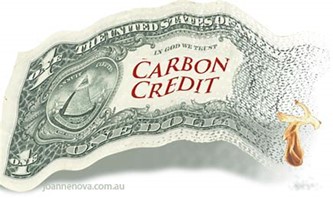Part 5. CARBON CREDIT Vs CARBON OFFSET

What is Carbon Credit?
Carbon credit refers to a tradable permit that allows a company to emit an equivalent amount of carbon dioxide or greenhouse gases. This permit allows them to emit a ton of carbon dioxide (GHG) or an equivalent amount. If companies use fewer credits (resulting in fewer emissions) they can trade and sell their remining credit to others who need it.
Indonesia is a heaven for the third largest rainforests in the world, and has about 200 tons of irrecoverable carbon per hectare. If we compare it to the Amazon, it has only 100 tons of carbon per hectare. The magnitude of this carbon potential can be an opportunity for Indonesia as a provider of carbon credit for developed industrialized countries. Indonesia has huge opportunity to utilize carbon credit. Since carbon credit is the trading of emissions between countries, Indonesia can sell its carbon credits to get financial incentives. In another word, countries that produce carbon emissions exceeding the provisions, must provide a number of incentives to countries that can absorb carbon. So we can see that the reduction of carbon gas is a trade.
What is carbon offset?
A carbon offset refers to a reduction in GHG emissions or an increase in carbon storage (e.g., through land restoration or the planting of trees), that is used to compensate for emissions that occured. Carbon offsets are usually done in developed countries with some programs such as reforestation, Reduction of Emissions from Deforestation and Forest Degradation, wind turbine, huge investment in renewable energy, etc.
A carbon offset credit is a transferrable instrument certified by governments or independent certification bodies to represent an emission reduction of one metric tonne of CO2, or an equivalent amount of other GHGs. The offset credit buyer can “use” it to claim the reduction towards their own GHG reduction goals.
We understand that GHGs emissions mix globally in the atmosphere, so it does not matter where exactly they are reduced. The key concept is that offset credits are used to convey a net climate benefit from one entity to another. Therefore, carbon offsets are intended to make it easier and more cost-effective for organizations.
What is the main difference between those two?
The main difference between carbon credit and carbon offset is that the carbon credit refers to the right to remove that carbon, while the carbon offset refers to the production of a certain amount of sustainable energy to offset the use of fossil fuels. So carbon offsets are created when a business or company decides to invest in something and aims to reduce greenhouse gas emissions excluding their day-to-day operations. In short, carbon offset is the act of negating CO2 emissions produced in one place with emissions reduction measures in another. Well, it sounds complicated and redundant, but carbon offsets come from third-party certified projects that can typically generate carbon credits.
On top of that, carbon offsets are rapidly becoming increasingly important as a mechanism to combat climate change and global warming.
References:
- Cnbcindonesia. 2020. Here’s the Potential of Carbon Credit Indonesia. Here’s the Potential of Carbon Credit Indonesia (cnbcindonesia.com)
- Chandra, Ardan Adhi. 2019. Luhut Mau Jual Kredit Karbon RI, Apa Itu? Luhut Wants to Sell Indonesian Carbon Credits, What Is It? (detik.com)
- Ghginstitute. 2022. What is a Carbon Offset? https://www.offsetguide.org/understanding-carbon-offsets/what-is-a-carbon-offset/
Picture: Yahoo.com

